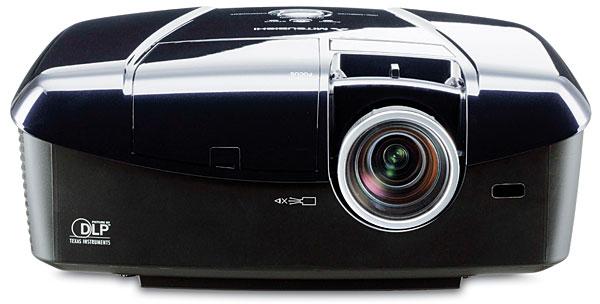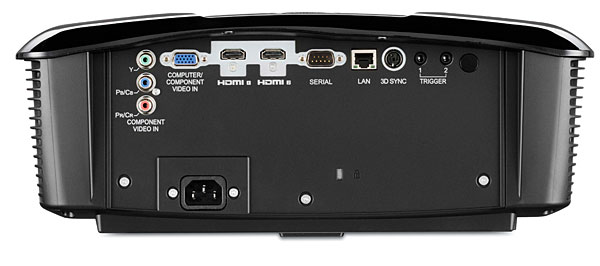I have buy many projectors many times but last time i buy the Mitsubishi projector. Projector is my basic usage because i have my own college of short courses and i delivered lecture of 70-410 with the help of multimedia. That was an awesome experience about Mitsubishi and the graphics result was so high.
Mitsubishi HC8000D 3D DLP Projector

AT A GLANCE
Plus
Excellent color
Crisp detail
Punchy image
Minus
Dim 3D
So-so blacks and contrast
THE VERDICT
You won’t find the deepest blacks in this price class, but the HC8000D’s bright, sharp, pleasing 2D picture is worth a look.
It seems like only yesterday that Mitsubishi ended its solitary status as the last holdout in the rear-projection DLP business. Oh, wait, it was only yesterday—at least in geologic HDTV time. But this was by no means the twilight of Mitsubishi Electric’s DLP video ambitions. These live on in a wide range of projectors, including the HC8000D single-chip DLP—a key player in the company’s consumer lineup.
Description
The HC8000D can display both 2D and 3D sources at a maximum resolution of 1080p. Its rear panel includes two HDMI and one each component and computer video inputs, along with a jack for the optional 3D sync transmitter and two 5V triggers.
The zoom and focus are both manual. The zoom will accommodate throw distances from 120 to 180 inches on a 100-inch-diagonal (87-inch-wide) screen. The vertical offset is large, and while there’s a (vertical only) manual lens shift control, its downward range is limited, making the projector best suited for an inverted, ceiling installation. My shelf mount and low screen demanded a position barely a foot off the floor.

There are nine picture modes, including two ISF modes and ten different gamma modes, which also include two ISF gamma options (out of the box, the ISF selections are hidden and only appear in the menus when opened and set up by a calibrator). The two User Gamma modes are adjustable at 12 points across the brightness range, with individual controls for red, green, and blue gamma, plus white (overall).
The User Color Temperature option offers both high (Contrast) and low (Brightness) white balance adjustments. There’s also a complete color management system, with Gain, Saturation, and Hue controls for each primary and secondary color.
The operation of the User Color Temperature (white balance) controls was straightforward, but as is often the case, the color management controls were highly interactive. It took me hours to achieve a good result (see the Test Bench). One reason for the extra time was that I had to do it twice. This was before I discovered that in order to save the settings in any given picture mode, you have to move the menu cursor to the Picture Mode line and push Enter. Otherwise, whenever you shut the projector off and turn it on again (or even if you just go to a different picture mode and back), the AV Memory automatically returns to the last saved settings. If you haven’t saved the calibration settings, they’ll be lost.
The Iris control has two separate submenus: Iris1 and Iris2. Iris1 offers three Auto settings. Iris2 lets you choose between High Contrast and High Brightness. You can choose any combination of these controls (or even turn the iris off), but there’s no option to select from a range of manual, fixed iris settings.
An Advanced Menu provides additional controls. These include Frame Rate Conversion (F.R.C.), which offers several varieties of motion smoothing, with an emphasis on frame interpolation. One of my favorite things—not! Of the three major projection technologies—DLP, LCD, and LCOS—DLP offers the best native motion performance and really doesn’t need frame interpolation unless you like your movies to look like soap operas.
 BrilliantColor is a Texas Instruments DLP enhancement (TI developed the DLP technology). But the main benefit I derived from it was not in color, but in higher brightness.
BrilliantColor is a Texas Instruments DLP enhancement (TI developed the DLP technology). But the main benefit I derived from it was not in color, but in higher brightness.
The available aspect ratios also include settings with the stretch required for use with an anamorphic lens.
While the remote control is good, with direct links to many (but not all) of the adjustments discussed above, I could not bounce its commands off the screen. I had to aim it directly at the projector.
I could just barely hear the projector’s fan noise in my preferred Lamp Mode setting (Standard, or high), but it was always masked by the source audio. And while there was some minor light leakage from the exhaust ports, it wasn’t distracting. Mitsubishi includes an extra lamp in the cost of the projector. The manual suggests (but does not specify) a lamp life of just under 5,000 hours (presumably in the Low lamp mode, though the manual is not clear on this). In our general experience with projectors, however, the picky videophile will want to replace the lamp much sooner than this.
2D Performance
The Mitsubishi’s video processing was fair. It failed the 2:2 pulldown in both HD and SD—a relatively common failure among the displays we’ve tested and nothing to be concerned about. It also clipped below black, which is more unusual. Normally there is no picture information there, but its absence does make it a little more difficult to properly set the Brightness control (black level).
The HC8000D did pass information above video white. However, my chosen position of the Contrast (peak white) control turned the whites at or above video white (235) a distinct shade of pink. The only way this could be eliminated was to reduce the Contrast significantly, producing a dimmer picture. Since the pink shift was never visible on real program material, I went with the higher Contrast setting.
Out of the box, the projector’s 2D picture looked respectable on my 96-inch-wide, 1.3-gain, Stewart StudioTek 130 G2 screen, though the measurements were mediocre. The Medium Color Temperature setting was best (though with a clearly measurable red shift). Post- calibration, the results were much better (see the Test Bench).
Most recommendations for display gamma range from 2.2 to 2.4. Put simply (gamma is not a simple topic!), gamma affects the brightness of the image everywhere except at peak white and black, i.e., in the middle brightness range. The lower the gamma number, the lighter the image at the point in the brightness range being measured.
- Log in or register to post comments





































































